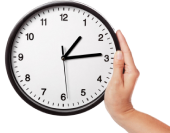INTRODUCTION
Consumer behaviour has been defined as the study of how the consumers or a business choose, buy, utilise and dispose of the concepts and services which assist in satisfying the desires and needs of the customers (De Mooij, 2019). It basically focuses on the behaviour of the customers, which is presented in the market, and specifies motives for the behaviour they have undertaken. Debenhams Private Limited Company is a multinational British retailing organisation which was established by William Debenham in 1778. The headquarters of the respective company is in London, United Kingdom. The fashion retailing industry provides ample products like clothes, toys, cosmetics, shoes, electric appliances, home décor, and various beauty accessories for their customers. Debenhams Private Limited Company decided to expand their business by launching beauty products as a type of new product. The report will explain the stages that help in identifying stages of consumer action for items and will demonstrate the value of mapping a path to know the process of decision-making. It will further elaborate on the differences as well as market research approaches between B2B and B2C.
MAIN BODY
P1. Explain and Analyse the Stages of the Consumer Decision-Making Journey for a Given product or service.
The process of forming consumer decisions generally includes evaluating the desires and wants of the consumers so as to accumulate such valuable data that is necessary in monitoring the advantages and disadvantages of the defined alternatives and then ultimately making the crucial step of making a decision. The variables of psychological, environmental, social, and economic aid in identifying the actions as well as the behaviour of the customer. The complexity of such a process has been analysed, and it commonly involves each and every aspect, from initialising and recognising issues associated with purchasing procedures to post-purchase (Zhang and Benyoucef, 2016). It has been suggested that each consumer has various wants in their lives, and such needs shape the urgency of making different processes in making decisions. The judgements that are being formed and made may be very complex, competitive, and evaluated entirely depending on the thoughts as well as views of the customer on a specific product. There are different stages in the process of fashioning consumer decisions that have to be determined by Debenhams plc; such stages are mentioned below.
Need recognition: This stage involves determining the exact needs of the customers. They try to address the issues so as to fill the gaps and identify the actual needs. Once the companies determine such wants, they target a desired market and work accordingly so as to fulfil the demands. During such a process, they also get possible chances to promote their brand name worldwide.
Information search: In this pre-purchase stage, the desired consumers tend to make constant efforts in gathering and accommodating much more information about the items and the products that assist in satisfying their wants. The data can also be collected by considering the recommendations from various people regarding the products, which are based on their past experiences. All the sources, like personal, public, commercial, and experiential sources, have been regarded as important assets in gathering information about the products and the rendered services.
Evaluating alternatives: Such steps include monitoring the various alternatives, which are usually represented in the market along with the services. Once the customer identifies their actual wants, they start searching for the ultimate and better options that are addressable in the existing market. The formation and evaluation of the alternatives are generally dependent on the quality as well as cost components, which are crucial for all consumers (Godey et al., 2016). They may go through many websites and read comments required for levelling up the satisfaction level.
Purchase decision: Once the predefined stages have been conducted, the consumer then ultimately makes the important decision of purchasing the goods or any products and resolving the issues. Till now it has been observed that all the aspects are evaluated and the customer has come to a reasonable conclusion that is settled on the basis of marketing agendas or purely based on the personal connection with the product.
Post-purchase actions: The reviews or comments that are being evaluated and analysed by the customers once they have used the services come under this stage. If the product is below their expectation level, it may lead to a lowering of the brand value in the market. If the goods are beyond their perspective level, then they influence more customers to purchase such goods and help create a solid customer base (Lantos, 2015).
An example of the customer decision-making journey is mentioned here.
- Need recognition: In order to recognise the need for the product, marketers of Debenhams Private Limited Company can help them. For this, the respective organisation can develop a brand campaign in order to create awareness and recognition. Such as, for an individual who only has light jackets in the season of winter, marketers of organisations can help her/him to buy some heavy jackets also to survive in lower temperatures.
- Information search: At this point, the customer will seek necessary information about the product and analyse what sort of product they need. Such as, individuals will search on Google about winter coats to look for a large number of options and what brand will be best for them.
- Evaluating alternatives: Here, the individual will compare some brands that he/she likes. And will find some options regarding material about that clothing.
- Purchase decision: The customer will finally find a cloth that is on sale with an appropriate discount. After confirming that Debenhams Private Limited Company uses sustainable materials and after asking for feedback from her/his friends, the customer will buy the coat.
- Post-purchase actions: Here, the organisation will try to identify some basic information, such as whether the product fulfilled the requirements of the customer and whether the customer is happy with the product. Along with that, the company will try to develop strategies to engage with the customer.
On the basis of the above information, it can be identified that the customer decision-making journey consists of different steps where service users decide what product they want to purchase by recognising product requirements, going through a search process, selecting a service, and then finally evaluating the product.
P2. Explain why it is important for marketers to map a path to purchase and understand consumer decision-making.
It has been seen that the value of mapping the path to purchase as well as knowing the consumer decision by the marketers in Debenhams is very essential. Consumers are always considered an integral part of an organisation; the marketing division of every company mainly focusses on such a sector so as to advertise their brand and make their sales more effective. As the customer is a vital organ of a retailing company, it is necessary to determine and recognise the particular effects influencing the nature and properties of the path and decision-making by the marketing team of the business (Juster, 2015). The customer journey mapping includes all the experiences and the connection a customer has towards any brand, which may lead to a chronic relationship between the consumers and Debenhams plc.
Customer path mapping aids the company to look at their business from the viewpoint of the customers; it assists in gaining the main issues that are being faced by the consumers, which eventually maintains and regulates the experiences of such individuals in order to enhance the sales and purchase rate of the enterprise. The process of mapping a path is pretty complex and comes with lots of variables. The customer may get the idea of purchasing the goods from any company by going through social media, referrals, and customer feedback; thus, the marketing team should be concerned with evaluating the paths of clients so as to check the process of decision-making as well as their purchasing priorities. The mapping procedure benefits have been discussed below.
Understanding the needs of the customer: The main task of any company is to primarily determine the needs of the customer because, as per the requirements, the respective business works and builds products. By mapping the customer journey course, Debenhams plc may become aware of the consumer wants so that they can focus on the emotional and personal string of the individual and then such companies make products which eventually assist in uplifting the ratio of profitability and help in generating the powerful relationship with the consumers.
Increasing customer experiences: So as to enhance the expectations and experiences of the customers, the process of mapping is considered very important (Zeugner-Roth, Abkar, and Diamantopoulos, 2015). The procedure renders many possibilities that aid in understanding the ideal consumer experience and provide chances to manage the experience related to the client for raising the bars of the company. With the prior understanding, the given company generates and applies innovative concepts so as to improve the servicing as well as the quality of products to regulate the expectations through upgrading online services and purchasing strategy (Bradford et al., 2017).
Competitive advantage: It is very necessary to make such creative amendments or changes in the products so as to give a tough competitive edge to other rival retailing companies; thus, mapping makes their process easier and reflects the way such advantage can be gained. Debenhams plc must lay emphasis on e-tailing, which makes the brand more popular and sets a status for making more online transactions and getting access to each and every customer through such a platform. Thereby, overall it aids in giving other perspectives for increasing the sales and highlighting the developmental priorities.
Influence of Marketing Mix on Consumer Decision-Making Process
The marketing mix mainly focusses on some variables that affect the decision-making power of the consumer; such variables are:
Product: The type of product that is being served by the organisation greatly influences consumer decisions. The quality, features, kind of brand, types, and properties of the product turn the choice of consumers to select a particular product over others.
Price: The pricing variable has the capacity to alter the choice of the consumer; thus, it has to be changed constantly. The pricing factor is dependent upon the current demand, market fluctuation, advertising cost and many more.
Place: The channel through which the products are being distributed refers to place. The closer the product is to the consumer, the more possibilities are there to get sold out by the clients.
Promotions: Another variable of the market mix is promotions, which cover above- as well as below-the-line marketing. Such an element is based on the price of the product. If a product gets more promoted, then it has a higher chance of demand and selling out.
TASK 2
P3. Compare and Contrast the Key Differences of the Decision-Making Process in the Context of B2C and B2B, Providing Specific Examples.
It has been observed that there are large differences in the decision-forming process in Debenhams plc with context to business to company and business to business. The B2B process involves making extensive transactions between two enterprises, called B2B, for instance, between the retailer and wholesaler. The decision-forming procedure is often difficult due to the huge transaction amount. The companies are orientated in such a way to form a connected and strong relationship among other transaction parties, which are usually small in size, and their prime aim is to form consumers from outlook (Mathras et al., 2016). The transaction that is being conducted between the company and consumer is called B2C, for instance, buying shoes or clothes from the mall. Such processes may require activities related to sales where marketing the goods and providing various services by Debenhams plc is channelled directly to the finalised user. The process of decision-making is much simpler because the transactions that are being made in this process involve a single step and do not lead to the involvement of more persons. The markets that are targeted are usually very big, and billions of customers are involved; thus, the major focus is to produce buyers from shoppers. Differences in decision-making are mentioned below.
Business to business: The major issue in Debenhams plc is to determine the desires of all the companies that are conducting various activities in the given enterprise. The business-to-business operation in Debenhams is being conducted with respect to meeting the wants of different companies. The company decides to launch beauty products in the marketplace. This company used a business-to-business marketing tool that will be beneficial for them in its business expansion and accomplishment of long-term goals and objectives easily. Business-to-business marketing is the best part of marketing that will support Debenhams plc in increment of its sales and market ratio. The business thus focusses on selling and marketing the products more and more so as to enhance the functioning and processing of the company (Rana and Paul, 2017). Once the selling processes are determined, the respective organisation will further uplift the targets and earnings for the business by satisfying the wants of other businesses. It has been observed that the customers in B2B take a comparatively much longer period of time to research the market so as to purchase any goods.
Business to consumer: The consumers are always treated as a vital organ of any organisation; the provided company tries to identify the desires of the clients and make such amendments in recognising such wants and then apply creative ideas to clear such issues (Haugtvedt, Herr, and Kardes, 2018). Launching beauty products is also significant for the company in attracting a large number of customers easily. For this, business-to-consumer is also an effective part of marketing that must be used by Debenhams plc to attract a large number of customers, resulting in a strong brand image and improved goodwill. B2C campaigns like online shopping and e-tailing such companies can reach an ample number of potential clients who may get interested in buying stuff who earlier could not get such access. The B2C has gained the profit of reaching houses from decision-makers; for example, to buy a formal suit for a meeting, the individual just has to get to their websites or visit some ad, which further helps them in getting the effective result in less amount of time. The B2C customer needs to observe everything as soon as possible to get the desired products easily. The organisation should find more ways to attract more customers of all age groups so as to make a strong bond and enhance the productivity of the company.
B2B and B2C differences
|
|
B2B |
B2C |
|
Meaning |
This includes selling and distribution of products and services to other business. |
This consists of selling products and services to the targeted customers. |
|
Focus |
This respective company is focussing on increasing the relationship with other companies. |
In B2C, organisations are focussing on offering products and services to customers in order to increase profits as well as meet consumer requirements. |
|
Example |
Debenhams Company is offering its products to other retail companies or shops. For instance, raw materials may be supplied in B2B to enhance the relationship among various organisations. |
This company is offering its products through different sources directly to customers. For example, unique or limited edition clothes may be provided to consumers in order to attract a larger number of customers and maximise productivity. |
P4. Evaluate the Different Approaches to Market Research and Methods of Research Used for Understanding the Decision-Making Process in Both B2C and B2B Contexts.
For determining and monitoring the wants as well as the demands of the existing market, it is very necessary that Debenhams plc critically evaluate and deal with all the essential processes that are included in the decision-making process. Such types of activities assist in understanding the wishes of the clients, empowering them, and developing some strong and valid strategies that will further help in growing the business and making fluent success. Debenhams plc, being one of the strongest retailing industries, provides unique and innovative services to a huge number of customers in the market by providing stylish clothes and extraordinary accessories. To fulfil the demands of the individuals and justify their roles, the company has to critically evaluate the wants of the clients and make decisions in such a way that positively regulates their chances of upgrading the quality as well as quantity of the goods. A few methods have been employed that may be used in the process of making efficient decisions and are described below.
Sample size: It has been observed that for researching the market, a particular size of the sample has to be considered. The sample size of B2B is much smaller; due to such a factor, the overall representation of the sample is not adequate. This issue may result from summed-up interviews that are not high and informative enough to be used in making conclusions or determining the results.
Importance of Telephone Interviews: Telephone interviews have been considered more effective than the interviews that are being held face-to-face. Personal interviews taken in a face-to-face manner are more costly than teledepth interviews because such interviews may require an individual to visit some other country or place (Calder, Isaac, and Malthouse, 2016). The teledepth interviews have been considered more focused in context with the gathered information and time.
The Pareto Principle: The Pareto principle has more impact in B2B research when compared to B2C research when the study is based on customers, where 20% is allotted to consumers for 80% of revenue. When conducting such customer-based research, it may be seen that a small portion of clients make a big part of revenue, thus they have to be treated exceptionally to the main body of the actual sample. In a few scenarios, it has been observed that such processes involve conducting in-depth interviews, while through various online surveys and questionnaires, the main body of such research can be made.
Research Methodologies: Various methodologies have been assigned as per the study so as to collect the data and conclude the study. Primary and secondary research data have been used to collect the information through various sources. Inductive and deductive approaches have been applied for gathering valuable data (Lin and Hsu, 2015). The type of investigation may be either qualitative or quantitative, and according to this, the researched data may be in non-numerical form or in digits. Probabilistic and non-probabilistic sampling methods have been employed for effectively sampling from a large number of the population.
For B2B, a qualitative type of research has been used, which involves making an effective questionnaire, and the question is then asked from a selected number of respondents, based on which interpretations are being formed. The information is being collected from secondary sources, including government data and some documents.
For B2C, the main information was collected from potential interviewing systems and surveys. The interviews are conducted with various individuals, through which logical analysis of the research is conducted, and from the surveys, statistical conclusions are made. All these methodologies assist in making decisions regarding the purchase of products.
TASK 3
P5. Evaluate How Marketers Can Influence the Different Stages of the Decision-Making Process of B2C and B2B, Giving Specific Examples.
The decision-making process plays a vital role in making different choices by going through various stages. The decision-making process in all kinds of business has a significant impact on overall business success. Going through a step-by-step process for making a decision will help the business and the organisation to make thoughtful decisions. The impact of marketers on different decision-making processes of B2C and B2B businesses in Debenhams is discussed here.
Evaluation of B2C Decision-Making Process
Need identification: It is basically the first stage of the decision-making process of businesses (Couture et al., 2015). This respective company needs to analyse the needs of customers, as this will help in making better decisions. For example, customers will first recognise the need that they need to buy clothes from Debenhams, and marketers will help them find out the particular need for some specific and trending clothes. Any specific clothes or accessories may be needed by the customer.
Collecting data: This process starts after the consumer recognises their needs. Marketers usually influence this process by finding the solution to the needs and making desirable decisions. For example, the customer will now get help from organisations to gather information about their specific choice.
Evaluation: The stage includes a comparison of different options in order to make the right decision. Marketers do research, as it plays an important role in considering a number of options before coming to a conclusion for customer decision-making (Feng, Govindan, and Li, 2017). For example, marketers can help customers look for the best options and try to fulfil their needs by evaluating their needs, which may be certain hair products.
Decision-making: This is the last of decision-making for marketers in business to consumers. By evaluating different alternatives as well as analysing their pros and cons. Marketers of respective companies will be able to make better decisions and accomplish desired goals and objectives.
Evaluation of B2B Decision-Making Process
Stage 1: Need recognition: There could be no productivity in the organisation if customers do not recognise that they have a need to take the service or buy the product. Marketers has an impact when they make the customer realise that they have a need for taking their service. In this, marketers will analyse the needs of other businesses in order to take better decisions. For example, a business may need to buy raw materials from another business in order to make clothes.
Stage 2: Gathering information: Marketers can do an internal and external assessment by recognising the strengths and weaknesses of their organisation and doing market research on what kinds of clothes are trending and what the requirements of customers are. There are various sources through which marketers could collect information regarding business-to-business. For example, through social sites or their websites.
Stage 4: Assess the evidence: In this stage, the consumers look for the products and services for which they need the necessary information. Marketers help customers to provide all the necessary information about the customers and help them to choose the right product.
Stage 5: Selecting an option: Coming to this stage, consumers have looked out for a number of options. They will now come to an understanding regarding all the payment options and pricing. Marketers help them to know the pricing system and help them with the most suitable payment option.
Stage 6: Implementation of decision-making: There is a large impact of marketers on this stage of the decision-making process. It is the moment when the customers finally buy the service or product. Each stage will be completed through the completion of this stage.
Stage 7: Evaluation and review: The sale is finally finished, and at this stage, the marketer needs to review the sale and thus evaluate the decision-making of the customer and help the organisation to make the whole process simple and easier (Chovanová, Korshunov, and Baba ANOVA, 2015).
Classical conditioning theory is one of the major consumer behaviour theories, which refers to giving spontaneous responses to a certain situation through repeated exposure. Instrumental theory, on the other hand, uses support and punishments for either minimising or enhancing the probability that a certain behaviour will take place in the future or not. Such theories are utilised for effective learning processes. The unconditioned and conditioned stimuli are some of the products that are received by learnt behaviour. Neo-Pavlovian models are utilised in placing people in various categories as per their roles and actions. Such a type of model assists in assigning roles to a large number of individuals with respect to attaining a task and making decisions.
Theory of consumer learning: behavioural and cognitive learning are considered the best theories that will be used by Debenhams plc to attract a large number of customers towards beauty products.
Behavioural Theory: Behavioural theory is mainly based on observable behaviours (responses) that take place as the result of exposure to stimuli.
Cognitive Theory: Learning is based on mental data processing; it is also frequently in response to problem-solving.
Therefore, both theories are useful for an organisation in increment of customer number and accomplishment of long-term goals and objectives within a given time period.
CONCLUSION
From the above report, it can be concluded that consumer behaviour is referred to as the examination of how the clients or a business select, acquire, utilise, and discard the concepts and facilities that help in pleasing the desires and the necessities of the consumers. Need recognition, information search, evaluating alternatives, purchase decisions, and post-purchase actions are some stages that are conducted to understand the consumer decision-forming process. Marketers have considered mapping the path for purchasing and analysing the decision-making step as very crucial in uplifting the business. Different business approaches and methodologies have been conducted in B2B as well as in B2C for smooth transactions among the business and to satisfy the desires of the customers in the market.


 Company
Company














